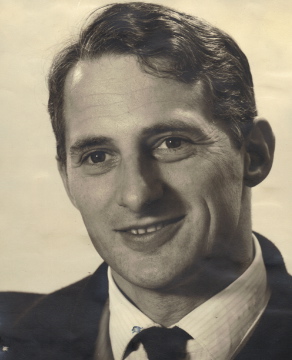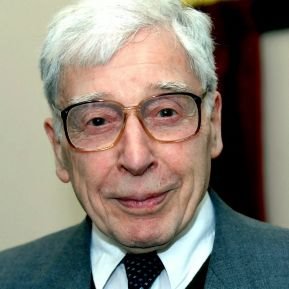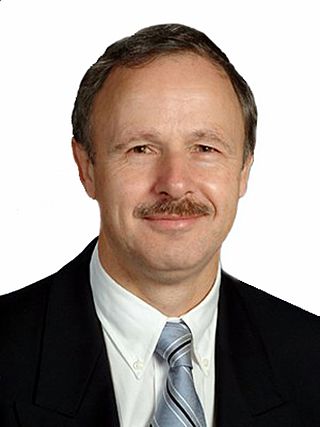Related Research Articles

In vitro fertilisation (IVF) is a process of fertilisation where an egg is combined with sperm in vitro. The process involves monitoring and stimulating a woman's ovulatory process, removing an ovum or ova from her ovaries and letting sperm fertilise them in a culture medium in a laboratory. After the fertilised egg (zygote) undergoes embryo culture for 2–6 days, it is transferred by catheter into the uterus, with the intention of establishing a successful pregnancy.

The blastocyst is a structure formed in the early embryonic development of mammals. It possesses an inner cell mass (ICM) also known as the embryoblast which subsequently forms the embryo, and an outer layer of trophoblast cells called the trophectoderm. This layer surrounds the inner cell mass and a fluid-filled cavity known as the blastocoel. In the late blastocyst the trophectoderm is known as the trophoblast. The trophoblast gives rise to the chorion and amnion, the two fetal membranes that surround the embryo. The placenta derives from the embryonic chorion and the underlying uterine tissue of the mother.

The Human Fertilisation and Embryology Authority (HFEA) is an executive non-departmental public body of the Department of Health and Social Care in the United Kingdom. It is a statutory body that regulates and inspects all clinics in the United Kingdom providing in vitro fertilisation (IVF), artificial insemination and the storage of human eggs, sperm or embryos. It also regulates human embryo research.

Edwin Carlyle "Carl" Wood,, FRANZCOG was a prominent Australian gynaecologist, best known for his pioneering work developing and commercialising the technique of in-vitro fertilisation (IVF). He gained considerable international and national attention for his wide-ranging contributions in the field of women's health over a period of almost 50 years, although not all of it was positive given the controversial nature of many of his endeavours.
Embryo donation is one disposition option for users of in vitro fertilisation with remaining fresh or frozen embryos. It is defined as the giving—generally without compensation—of embryos remaining after in vitro fertilization procedures to recipients for procreative implantation or research. Most IVF users with supernumerary embryos make embryo donation decisions after completing their families or discontinuing use of in vitro fertilization. Recipients of embryos donated for procreative implantation typically plan to transfer fresh or frozen embryos into a prepared uterus in order to facilitate pregnancy and childbirth. Recipients of embryos donated for research typically use them for clinical training, quality improvement research, or human embryonic stem cell research.

Sir Robert Geoffrey Edwards was a British physiologist and pioneer in reproductive medicine, and in-vitro fertilisation (IVF) in particular. Along with obstetrician and gynaecologist Patrick Steptoe and nurse Jean Purdy, Edwards successfully pioneered conception through IVF, which led to the birth of Louise Brown on 25 July 1978. They founded the first IVF programme for infertile patients and trained other scientists in their techniques. Edwards was the founding editor-in-chief of Human Reproduction in 1986. In 2010, he was awarded the Nobel Prize in Physiology or Medicine "for the development of in vitro fertilization".
Sammy Lee was an expert on fertility and in vitro fertilisation

The Human Fertilisation and Embryology Act 1990 is an Act of the Parliament of the United Kingdom. It created the Human Fertilisation and Embryology Authority which is in charge of human embryo research, along with monitoring and licensing fertility clinics in the United Kingdom.

Oocyte cryopreservation is a procedure to preserve a woman's eggs (oocytes). This technique has been used to enable women to postpone pregnancy to a later date – whether for medical or social reasons. Several studies have shown that most infertility problems are due to germ cell deterioration related to aging. The intention of the procedure is that the woman may choose to have the eggs thawed, fertilized, and transferred to the uterus as embryos to facilitate a pregnancy in the future. The procedure's success rate varies depending on the age of the woman, with odds being higher in younger, adult women.

In vitro maturation (IVM) is the technique of letting the contents of ovarian follicles and the oocytes inside mature in vitro. It can be offered to women with infertility problems, combined with In Vitro Fertilization (IVF), offering women pregnancy without ovarian stimulation.
The Australian Stem Cell Centre is an Australian medical research and development centre which focuses on regenerative medicine through the use of stem cells. Founded in 2003, the Centre is the National Biotechnology Centre of Excellence and has received over $100 million in funding in recent years. It is Australia's premier stem cell research organisation.
Samuel H. Wood is a scientist and fertility specialist. In 2008, he became the first man to clone himself, donating his own DNA via somatic cell nuclear transfer (SCNT) to produce mature human embryos that were his clones.
Monash University is an Australian university located in Melbourne, Australia with some international campuses. It was established by an Act of the State Parliament of Victoria in 1958 as a result of the Murray Report which was commissioned in 1957 by the then Prime Minister Sir Robert Menzies to establish the second university in the state of Victoria.
Stem cell laws are the law rules, and policy governance concerning the sources, research, and uses in treatment of stem cells in humans. These laws have been the source of much controversy and vary significantly by country. In the European Union, stem cell research using the human embryo is permitted in Sweden, Spain, Finland, Belgium, Greece, Britain, Denmark and the Netherlands; however, it is illegal in Germany, Austria, Ireland, Italy, and Portugal. The issue has similarly divided the United States, with several states enforcing a complete ban and others giving support. Elsewhere, Japan, India, Iran, Israel, South Korea, China, and Australia are supportive. However, New Zealand, most of Africa, and most of South America are restrictive.
Religious response to assisted reproductive technology deals with the new challenges for traditional social and religious communities raised by modern assisted reproductive technology. Because many religious communities have strong opinions and religious legislation regarding marriage, sex and reproduction, modern fertility technology has forced religions to respond.
Mitochondrial replacement therapy (MRT), sometimes called mitochondrial donation, is the replacement of mitochondria in one or more cells to prevent or ameliorate disease. MRT originated as a special form of in vitro fertilisation in which some or all of the future baby's mitochondrial DNA (mtDNA) comes from a third party. This technique is used in cases when mothers carry genes for mitochondrial diseases. The therapy is approved for use in the United Kingdom. A second application is to use autologous mitochondria to replace mitochondria in damaged tissue to restore the tissue to a functional state. This has been used in clinical research in the United States to treat cardiac-compromised newborns.
The history of in vitro fertilisation (IVF) goes back more than half a century. In 1959 the first birth in a nonhuman mammal resulting from IVF occurred, and in 1978 the world's first baby conceived by IVF was born. As medicine advanced, IVF was transformed from natural research to a stimulated clinical treatment. There have been many refinements in the IVF process, and today millions of births have occurred with the help of IVF all over the world.
John Jin Zhang is a medical scientist who has made contributions in fertility research, and particularly in in vitro fertilization. He made headlines in September 2016 for successfully producing the world's first three-parent baby using the spindle transfer technique of mitochondrial replacement. Having obtained an M.D. from Zhejiang University School of Medicine, an M.Sc. from University of Birmingham, and a Ph.D. from University of Cambridge, he became the founder-director of New Hope Fertility Center in New York, USA.

Roger Gordon Gosden is a British-American physiologist in the field of female reproductive medicine. His scientific research focused on understanding the basic biology of development and senescence of ovaries in women, including mathematically modeling those processes. He did important translational research on ovarian tissue cryopreservation and transplantation.
John Dennis Biggers was a British and American reproductive biologist and reproductive physiologist who helped pioneer in vitro fertilisation. He played a founding role in the scientific study of reproductive physiology, won many scientific awards for developing technology which would become central to human IVF, and engaged in public outreach regarding the ethics of artificial fertilisation.
References
- ↑ Clohesy, Bernadette (16 May 2015). "Two of us". The Sydney Morning Herald . Retrieved 4 September 2016.
- 1 2 3 Alafaci, Annette (27 September 2006). "Trounson, Alan Osborne". Encyclopedia of Australian Science. Retrieved 3 September 2016.
- ↑ Sharkey, David. "Life Members of The Society for Reproductive Biology". Membership. The Society for Reproductive Biology. Archived from the original on 11 September 2016. Retrieved 4 September 2016.
- ↑ Pitt, Helen (26 August 2012). "Man on a mission". The Sydney Morning Herald . Retrieved 4 September 2016.
- ↑ "State Finalist Senior Australian of the Year 2013". 6 November 2012. Archived from the original on 6 January 2013. Retrieved 21 March 2017.
- ↑ Kaiser, Jocelyn (17 October 2013). "CIRM Director Steps Down". Science Now. Retrieved 3 September 2016.
- ↑ Servick, Kelly (30 April 2014). "California Stem Cell Institute Picks Industry Veteran as President". Science Now. Retrieved 3 September 2016.
- ↑ Wood, Carl; Riley, Robyn (1992). I.V.F. In Vitro Fertilisation. New Edition. ISBN 978-0-85572-212-8.
- ↑ The British Fertility Society – About > Eponymous Winners Archived 17 July 2007 at the Wayback Machine
- ↑ Australian Stem Cell Centre Archived 7 October 2007 at the Wayback Machine
- ↑ Wroe, David; Gray, Darren; Douez, Sophie (30 August 2002). "Monash Uni gags Trounson as MPs ban cloning". The Age . Retrieved 3 September 2016.
- ↑ "Uni denies gagging Trounson". The Age . Australian Associated Press. 30 August 2002. Retrieved 3 September 2016.
- ↑ Knight, Ben (29 August 2002). "Professor Trounson defends himself". AM. Australia: ABC Local Radio . Retrieved 3 September 2016.
- ↑ Kelly, Fran (29 August 2002). "Has Trounson affected the future of stem cell research?". The 7.30 Report . Australia: ABC TV. Archived from the original (Transcript) on 15 May 2013. Retrieved 3 September 2016.
- ↑ Australia Day – Victoria – What's On – Ambassadors Archived 29 August 2007 at the Wayback Machine
- ↑ Australian Humanists Of The Year Archived 30 August 2007 at the Wayback Machine
- 1 2 "Cloning and Stem Cells". Archived from the original on 28 September 2007.
- ↑ "ISSCR Officers". International Society for Stem Cell Research. Archived from the original on 25 June 2007.
- ↑ Trounson, Alan (12 April 2007). "Alan Trounson talks with Robyn Williams". Talking Science (Interview: video/audio). Interviewed by Robyn Williams. Australia: ABC . Retrieved 3 September 2016.
- ↑ Weekes, Peter (16 September 2007). "Stem cell pioneer joins science exodus". The Age . Retrieved 3 September 2016.
- ↑ "Emeritus Professor Alan Osbourne Trounson". It's An Honour. Archived from the original on 13 June 2021. Retrieved 13 June 2021.